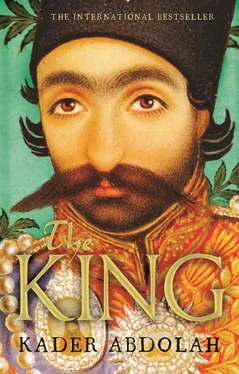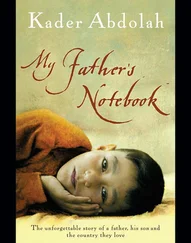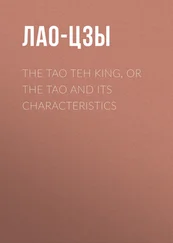— Three technical schools in Tehran, Tabriz and Isfahan.
— A large library in Tehran containing modern scientific books on urban development and road construction.
— A mining school in the city of Sultanabad.
— Five printing offices in five major cities.
— A hospital in Tehran and a women’s clinic in Tabriz.
— Several primary schools for the children of Tehran.
— Leather and shoe factories.
— A military training institute for young people.
— Schools for drawing and painting.
— Two boarding schools for orphans in Tehran.
— Textile, glass, iron, copper, paper, sugar and tobacco factories in various cities.
— A small spring factory in Shiraz for the suspension of carts and coaches.
— And last, a factory for the casting of medium-sized bells for the cities.
On top of all this he firmly demanded that a number of cannon and cannonball factories be built in Tehran, Isfahan and Shiraz so the army would no longer be dependent on Russian or British cannons.
The vizier realised he would not be able to bring all his plans to fruition during his lifetime. He knew how great the opposition would be. But of all his dreams there were at least three that he wanted to see fulfilled.
First he wanted all the children in the country to be vaccinated against smallpox. This would bring a halt to the nation’s increasing rate of blindness. His second dream was a technical school for gifted children, which he would later incorporate into his development plans. His third dream was highly personal. When he was still a boy, his father worked as a minister in the cabinet in which he would later be prime minister. After having travelled to Russia his father told him about the bells that hung high up in the churches there, the bells that rang so the entire city could hear them. Later, when Mirza Kabir was a young man, he was part of a delegation to Moscow. In the Kremlin he heard for the first time the bells his father had described. The whole notion of time made him tremble with happiness: time that advances, time that slips away.
That boyhood dream had never left him. He had met with the engineer of a French bell foundry to discuss the possibility of hanging a number of bells in big cities like Tehran, Isfahan, Shiraz and Tabriz. The bells could not be placed in the minarets, of course. That would be too reminiscent of churches, which would create ill feeling. The vizier thought of putting the bells on the great squares of the country’s bazaars. Sometimes while riding to the bazaar he could almost hear the bells ringing in his mind. Time was standing still in his homeland. He wanted to use the bells to get time moving again.
He had made his wish known. The engineer would erect a foundry and start making bells as soon as the country entered calmer waters.
There was one big problem standing in the way of these developments: the country had no decent roads, only narrow tracks that had been beaten down naturally by horses and coaches. Long ago Persia had boasted the greatest roads in the world, but time and war had destroyed them and they lay buried beneath many layers of earth.
To stay on good terms with the populace and to quell their unease about the presence of the French, the vizier asked the Russians if they would be willing to build a new network of roads to connect the cities of Persia. They accepted the offer immediately and went straight to work. They passed over the southern cities and began with the roads that brought them closer to the borders with India. The vizier was aware of this, but he also knew that what the Russians were doing was good for the country.
The presence of the Russians in the northern and eastern parts of Persia was another thorn in the side of the British. They had no leverage with the vizier, who was eager to keep everybody happy. Another problem was that the vizier came from a family that was not easily bribed. So the British decided to wait. They provided the Afghan tribes with weapons and military advisors to block any Russian invasion of India that might take place.
At the same time the British tried to use their front men to set Mahdolia further against the vizier. They sent her false reports that the vizier was planning to weaken the position of the shah over time.
‘He signs whatever papers the vizier puts in front of him, without asking any questions,’ complained Mahdolia to her confidant, Sheikh Aqasi.
‘It is indeed disquieting,’ agreed Sheikh Aqasi. ‘It won’t be long before the shah loses all his power. It is your duty to admonish the shah.’
‘I will talk to him,’ said Mahdolia. ‘I must talk to him.’
The shah often went on cross-country journeys, and he always took a group of his wives with him. During these journeys he gave his subjects the opportunity to admire him, and he also received local officials. He invariably paid visits to the army barracks.
He looked forward to receiving delegates from the various trades, which happened every now and then. He also had regular visits from clergymen, with whom such contacts were useful. He invited the imams with royal connections to come round on holy feast days, such as the birthdays of the Prophet Muhammad and the holy imam Ali, and the anniversaries of their deaths.
When the clergymen came the chamberlain had to make them wait for the shah in the golden hall for a long time. While they waited they were treated to tea and refreshments. When the shah came in the clergymen all bowed, and one by one they kissed his hand. The shah then gave a brief speech, chatted with some of them, asked them to pray for him and for the kingdom, pressed special gold coins bearing his image into their hands and withdrew once again. Then he would whisper in Sharmin’s ear, ‘A pack of fools. They all smell of goat droppings.’
Sometimes the shah didn’t want to be shah any more. He envied those who were free to walk in the street and go to the bazaar, or to work on their land as farmers. He found life in the palace boring most of the time because one day was no different from the next. He read, he wrote, he studied the documents the vizier showed him, he ate, and sometimes he spent the evening in the harem. He went for long walks and visited his mother. Occasionally he looked in on his daughter to see if she was studying hard.
Today he strolled into the courtyard and went to the elegant structure that was set off by itself behind the tall trees and was known as ‘Tableau Noir’. It was a single pleasant room decorated with French furniture and very fine paintings by the famous Persian artist Kamal-ol-Molk. Mounted on the wall was a blackboard, tableau noir in French. There were also a few chairs for the pupils, all of them children the shah had begotten by women of his own tribe.
The schoolroom had been built by order of the shah’s father. When the crown prince was a boy he had learned French and mathematics there from an old French lady. The teachers had always been French: the wife of one of the staff members at the French embassy or a lady brought in from France for this special purpose.
Now Taj Olsultan was being taught by such a French lady. She was new. The vizier had arranged for her employment through the embassy. She lived in the French residence and spent a few hours every day giving lessons to Taj.
Looking through the window the shah could see the French woman standing at the blackboard. She was new and shy. The shah was not sure whether he should go in or not, but his cat sprang from his arms and boldly sidled up to Taj.
The teacher walked to the door. She greeted the shah and made a little curtsy. Then she stepped aside to let the shah enter. But he stayed where he was.
Читать дальше












